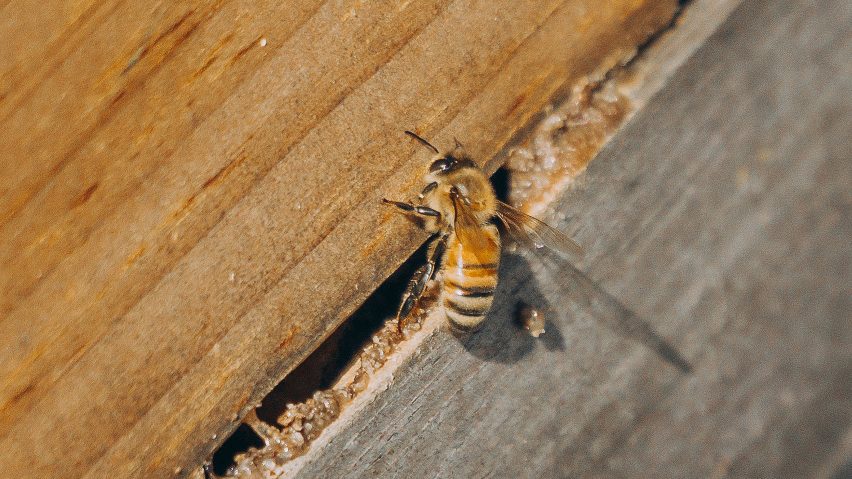The rapid rise in urban apiaries is exceeding the amount of greenery available to feed both honey bees and other pollinators, according to a study from the Swiss Federal Institute for Forest, Snow and Landscape Research.
The study, called "Challenging the sustainability of urban beekeeping using evidence from Swiss cities", represents the "first attempt to quantify the sustainability of urban beekeeping", according to its authors.
It found that the number of beehives across 14 Swiss cities has more than tripled in recent years, going from 3,139 in 2012 to 9,370 in 2018.
By the end of this six-year period all cities, including Zurich, Geneva and Basel, were home to an average of around 10 beehives per square kilometre of urban green space, despite the fact that this area only provides enough resources to sustain around seven hives.
"We found large increases in hives numbers across all cities from an average 6.48 hives per square kilometre (3139 hives in total) in 2012 to an average 10.14 hives per square kilometre (9370 in total) in 2018 and observed that available resources are insufficient to maintain present densities of beehives, which currently are unsustainable," the research paper stated.
As the increase in urban beehives will likely continue to outpace the creation of new green spaces, the report argues the problem is only set to get worse.
This will have a detrimental effect not just on the growing honey bee populations cultivated in the hives, but also on wild bees and other pollinators who will struggle to compete with this more aggressive, dominant species for increasingly scarce resources.
"Uncontrolled and unregulated beekeeping is posing a threat to both wild bees and honey bees," the study's co-author Joan Casanelles told Dezeen.
"Resources, meaning flowers, are finite. And increasing the resource demand by adding thousands of new honey bees without the resources increasing at the right pace is posing a threatening scenario."
Beekeeping is farming, not conservation
Beekeeping has often been promoted as a means of saving an endangered species and increasing biodiversity in cities via projects such as Snøhetta's Vulkan Beehives, but Casanelles says this narrative fundamentally misunderstands the problem.
That's because the honey bee, which is commonly farmed in hives, is only one of around 20,000 to 30,000 bee species in the world.
Out of all the bee species, the honey bee is by far the most dominant today. It is also among the few that is not in decline, as the only insect that is widely managed and raised for food.
"Honey bees have found many representatives, who usually care more about money than the environment, advocating to save them due to their critical importance in economic and production systems," Casanelles said.
"On the other hand, all the remaining wild insects that have no representatives in the corporate world are declining at alarming rates," he added.
"Beekeeping is not a conservation activity to save wild bees, the same way having cattle or pets is not a way of protecting wild mammals."
Cities can be like nature reserves
The solution, according to Casanelles, is considering beekeeping as a form of livestock raising instead of conservation and regulating the number of beekeeping locations and the density of hives.
At the same time, cities should be reconsidered as possible conservation sites by creating better habitats for wild bees and other pollinators.
This is possible by creating more green areas amidst existing grey infrastructure, restoring degraded or monocultural lots, and providing safe nesting places in the form of shelters and bee bricks. The latter became a planning requirement for new buildings in Brighton earlier this month.
"Cities and urban ecosystems have to be included in the conservation strategies," Casanelles said. "It is not enough to have pristine or 'natural areas', whatever that means."
"How buildings and urban elements are designed and how the green space is planned and managed has significant impacts on habitat restoration, habitat creation and biodiversity conservation," he added.
"Good communication and synergies between ecologists, planners, architects and managers are key to this."
Individual cities including London, Paris and Perth have undertaken similar studies on the sustainability of urban beekeeping.
But the research from the Swiss Federal Institute for Forest, Snow and Landscape Research (WSL), which was supported by the country's Federal Office for the Environment, marks the first time that the topic has been considered across multiple different locations.
The top image is by Timothy L Brock via Unsplash and the graphs are courtesy of Joan Casanelles and Marco Moretti.

